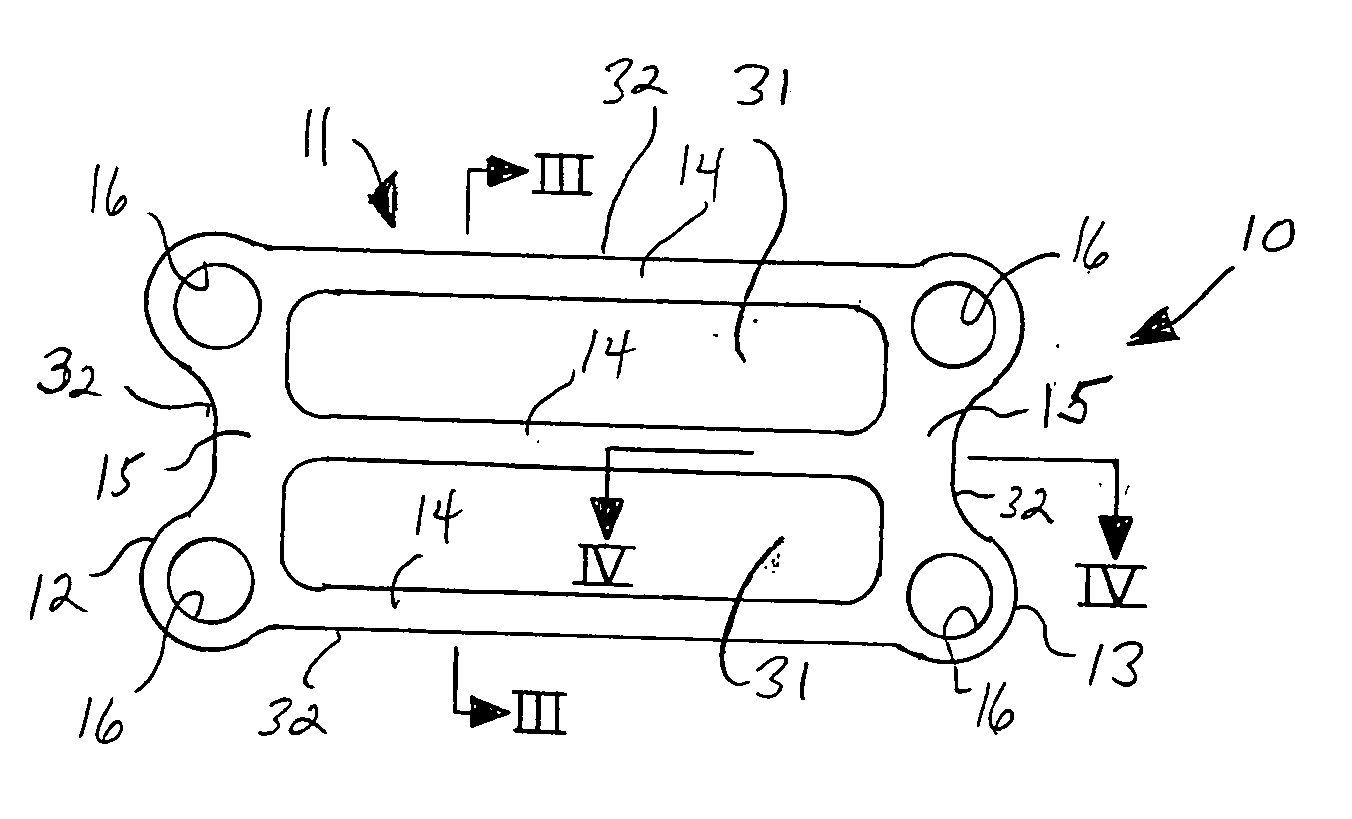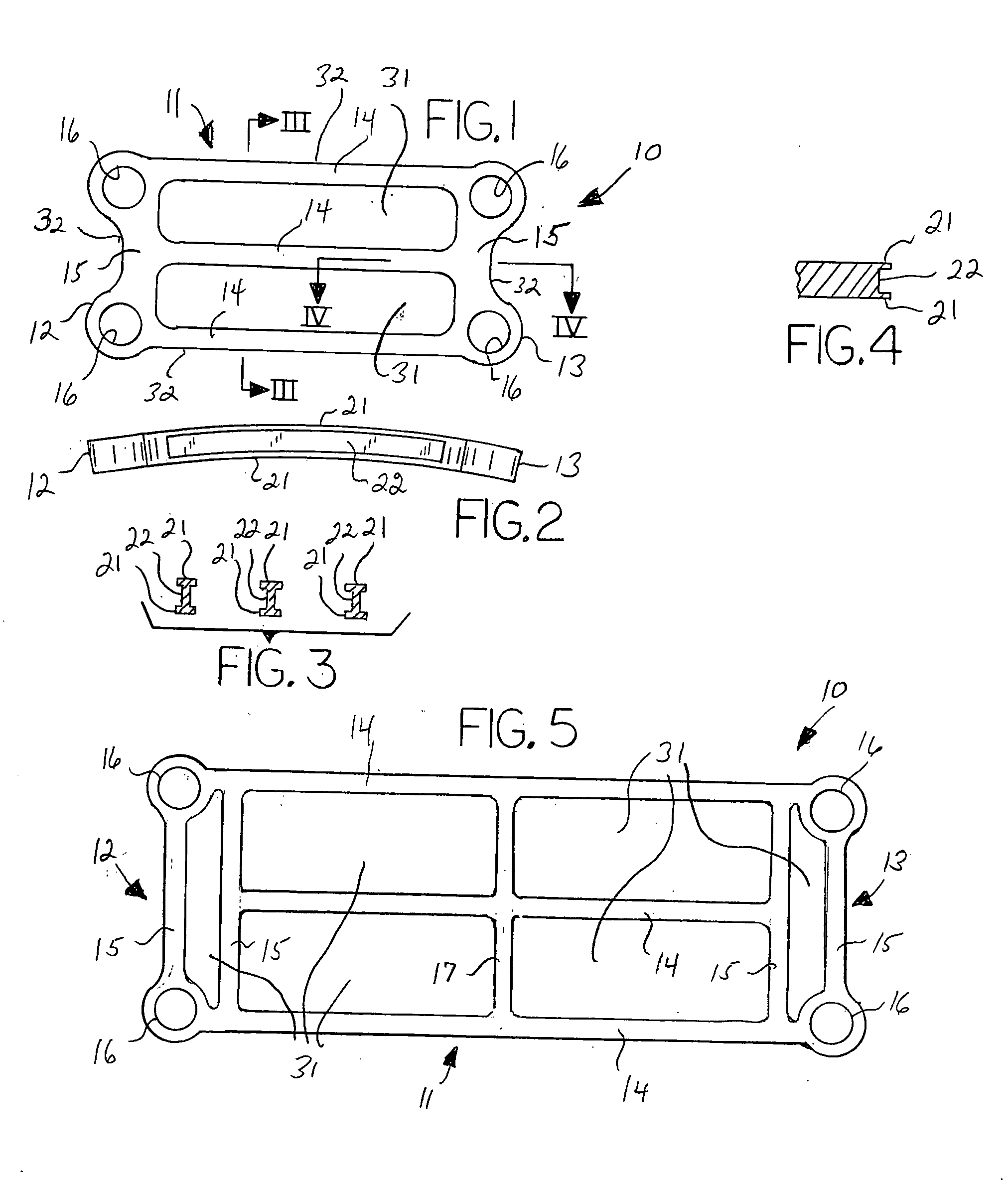I-beam configuration bone plate
- Summary
- Abstract
- Description
- Claims
- Application Information
AI Technical Summary
Benefits of technology
Problems solved by technology
Method used
Image
Examples
Embodiment Construction
[0013] With reference to the drawings, the invention will now be described with regard for the best mode and the preferred embodiment. In general, the invention comprises a bone fixation plate composed of a biocompatible material that is suitable for securing together in a fixed and rigid manner two bones or bone segments such that relative movement between the two bones or bone segments is precluded, such as for example the fixation of adjacent vertebrae, or the fixation of adjacent bone segments when a bone has been fractured, or the fixation of adjacent bone segments when a bone has been surgically severed during a medical procedure. For ease of reference in this disclosure, the term “bone segment” shall be taken to include bones, bone fragments, bone sections or the like.
[0014] The bone plate 10 is a generally flat, as shown in FIG. 1, or curved member, as shown in FIG. 2, composed of a metal or similar biocompatible material having good strength and rigidity characteristics, s...
PUM
 Login to View More
Login to View More Abstract
Description
Claims
Application Information
 Login to View More
Login to View More - R&D
- Intellectual Property
- Life Sciences
- Materials
- Tech Scout
- Unparalleled Data Quality
- Higher Quality Content
- 60% Fewer Hallucinations
Browse by: Latest US Patents, China's latest patents, Technical Efficacy Thesaurus, Application Domain, Technology Topic, Popular Technical Reports.
© 2025 PatSnap. All rights reserved.Legal|Privacy policy|Modern Slavery Act Transparency Statement|Sitemap|About US| Contact US: help@patsnap.com


